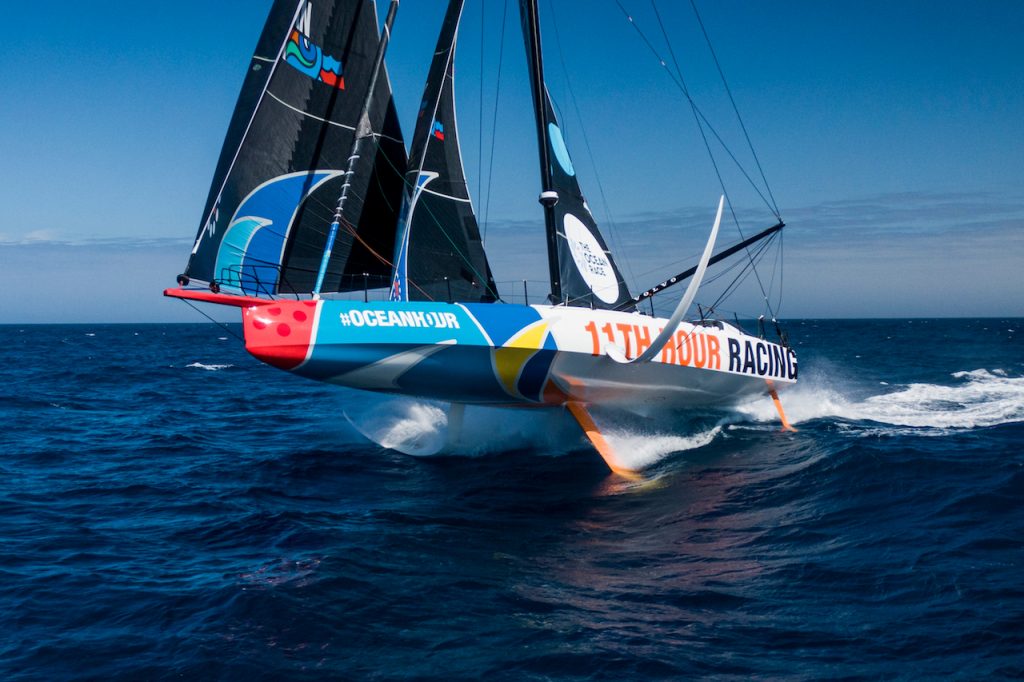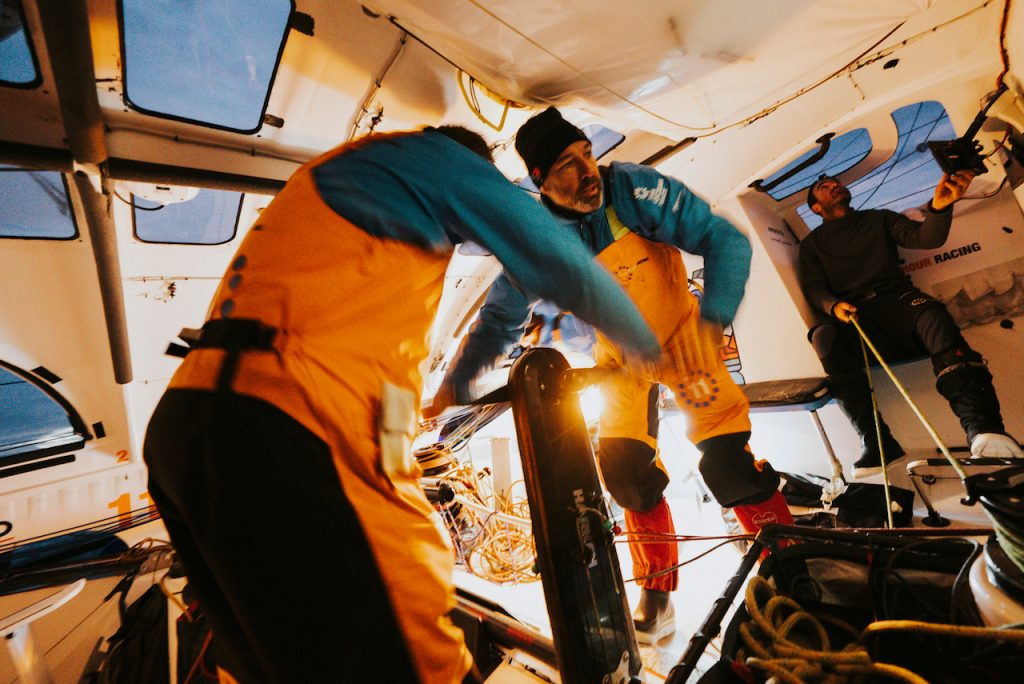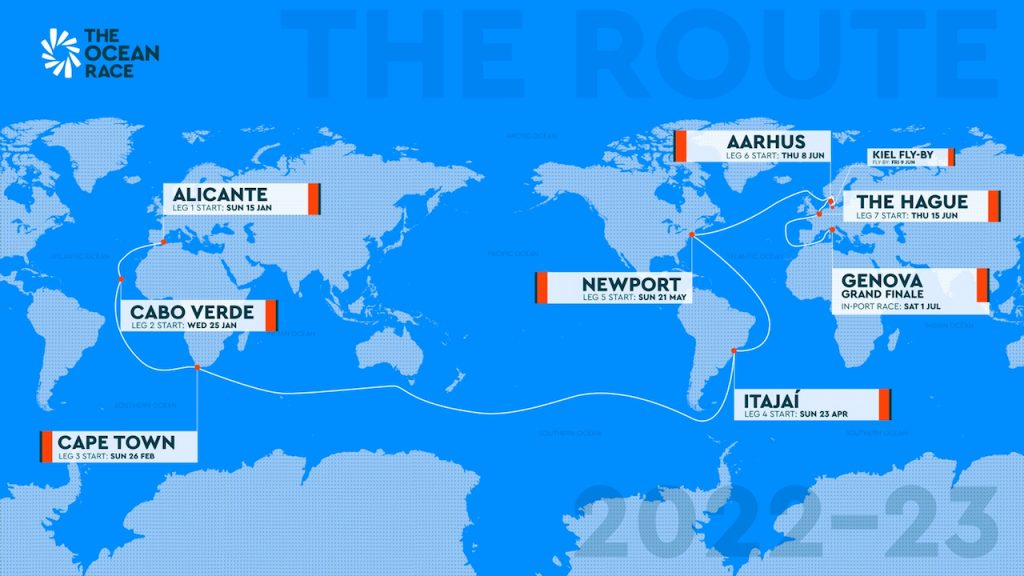
Mālama enjoying nice conditions with flat water and a building breeze at 45-degrees south.
The IMOCAs in The Ocean Race are smashing speed records, and 11th Hour Racing Team onboard reporter Amory Ross is elevating drone videography and photography to new heights.
© Amory Ross/11th Hour Racing Team/The Ocean Race
On Thursday 16 March, at 1000 local time, The Ocean Race offered up a call with three of the boats currently in the Southern Ocean making tracks for C. Horn: Team Malizia (Skipper Boris Herman), 11th Hour Racing Team (Charlie Enright), and current race and leg leader, Holcim-PRB (Kevin Escoffier).
Each boat gave up 20 minutes of their early morning hour to chat and answer written questions from a pool of about 35 journalists from around the world, including three from Newport, Rhode Island. The entire event was hosted by The Ocean Race media office in Alicante, Spain and coordinated locally through Sail Newport, the race’s Newport stopover host.
The ubiquitous Zoom meeting was the platform, and unfortunately it is fine for sales meetings, but loses something in the translation when coming from the depths of the Southern Ocean. The images reminded me of those early “live satellite” pictures: grainy, pixilated and jerky. But it got the job done.
The common thread across all three skippers was the requirement to be very careful with the gas pedal. As all the boats are experiencing, the line between penthouse and outhouse is even thinner than any normal ocean racing. Kevin Escoffier remarked, when questioned about his new 24-hour run record, on the culmination of factors that allowed this speed. The right wind speed, the right wind angle and the right sea state, pretty flat. As has become common with high-speed ocean sailing boats, they don’t necessarily need 45 knots of wind to break records. In fact, that is more likely to break boats, as has been seen across the fleet. Rather they are all looking for conditions that will allow for higher averages. Lots of steady 25 knots of boat speed and less of the start-stop 15-35 knots.

A twilight gybe has Mālama’s cockpit full of lamplight.
© Amory Ross/11th Hour Racing Team/The Ocean Race
The comms. quality was further aggravated, at least to the ear accustomed to Anglo Saxon speakers, by the non-English speaking commentators. Charlie was of the course the easiest to understand. The French and German, not so much, though much of the credit for this can be laid at the feet of the platform and kit.
I asked Charlie one of my favorite questions: “How to get more Americans in this race?”
“Start at home,” says he. “Have more, create more, opportunities for younger sailors to get going with ‘simple’ overnight races. Get them involved in the rest of the offshore activity, learning how to work ion boats, develop skills that are useful at sea.”
In connection to the series of breakdowns 11th Hour Racing Team has had, Charlie remarked on the discussion aboard of detouring to New Zealand for a pit stop, but decided as a crew, to press on. “There is substantial layover time in Itajai, and on average they thought it better to stay in the game” they decided.
One cannot help but think that part of this is to get the boat set up so they can come smoking onto Castle Hill in a blaze of spray, and, one hopes, in front of the wily Escoffier.
There will be a repeat event in a week with the other two boats. Guyot has left Cape Town and is under way to Itajai. Biotherm is in the mix of the pack sniffing at PRB’s rudders.
Coop

